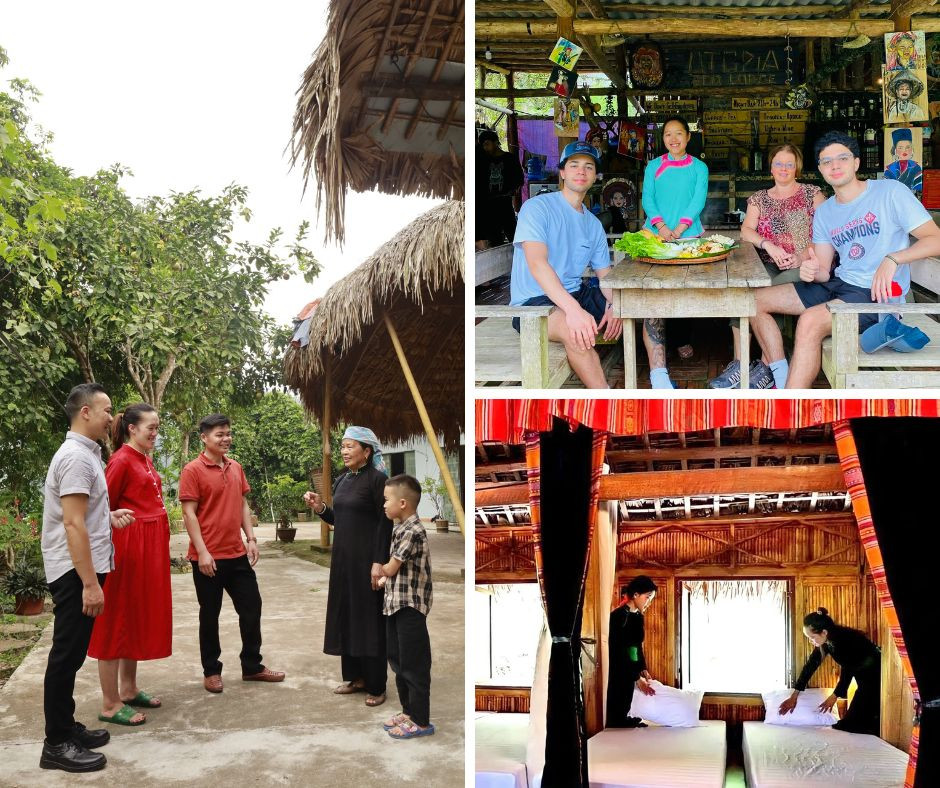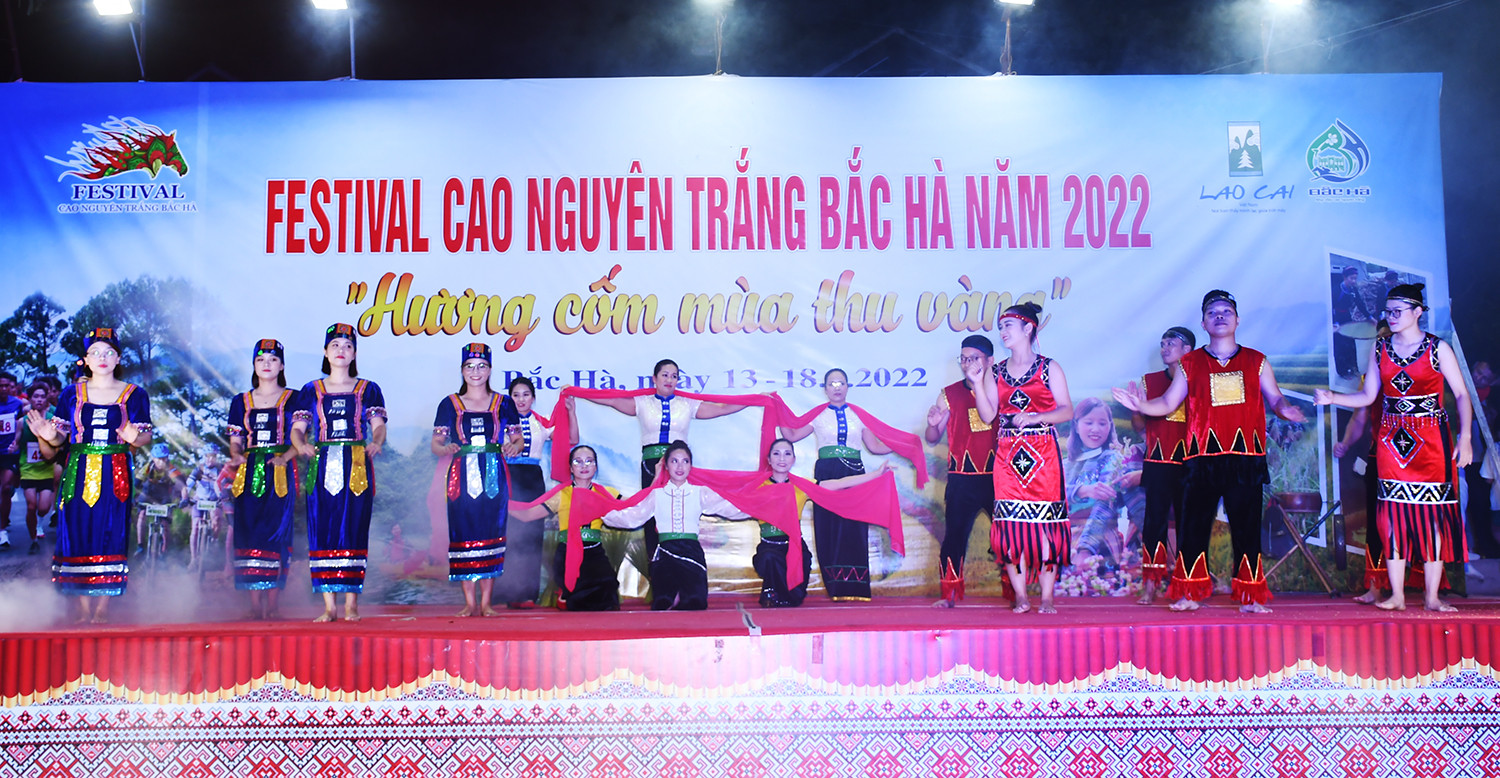Preserve the ancient Hung Ho culture
Hung Ho - Huong Vinh area of the ancient Dai Viet nation and Sa Pa - Muong Hoa today hides in itself many miracles with the beauty of Hoang Lien Son mountains. Along with the cool climate all year round, this place preserves the rich cultural identity of the Mong, Tay, Dao, Giay and Xa Pho ethnic groups ...Ancient Hung Ho - Huong Vinh…
According to historical records, in March 1886, the French sent troops to occupy Lao Nhai (currently Lao Cai) and in early 1887 took troops to occupy the Hung Ho area (Sa Pa town) and Huong Vinh (Muong Hoa valley) - where the valleys lie halfway up the Hoang Lien Son range. When coming here, the French felt that the Hung Ho area was rich in nature, the climate was no different from Aquitaine in France, therefore it was chosen to be a resort for officials and soldiers.
 |
| One corner of current Sa Pa. |
In 1903, the expedition of Indochina Geography Department sketched the map of Lo Suoi Tung plateau and Sa Pa village to give the height of Hoang Lien Son mountain range, including Fansipan peak 3,142 m. Because of the peak, the expedition called the Sa Pa plateau as Sa Pa high station (later when Earth Physics Station was built, the Soviet expert suggested to build a 1 meter-high copper-covered landmark marking the coordinates on Fansipan peak, from here all documents recorded Fansipan peak 3,143m). On June 2, 1909, Chief of Mission Lao Kay (Lao Cai) formally sent a report to the Northern Governor, proposing the establishment of a high-class sanatorium - tourism station in Sapa station. The investment in building Hung Ho center into a nursing area with two functions is to take care of the health of the French army and to receive French tourists and natives who are planning, opening the direction for tourism development of this newly reclaimed land.
During more than 60 years of occupation (1887 - 1950), the French worked hard to plan and build Hung Ho land with many similarities with Aquitaine. Castles and villas had been built soon. To reassure Westerners and to bring indigenous people from the plains, in 1909, the French built a temporary Christian church, then built a stone church in 1925, built Ta Phin monastery in 1942.
After the liberation day (November 3, 1950), Sa Pa was interested in consolidating and building. In the transformation after the liberation, the farms of growing vegetables, fruits and medicinal plants flourished, making Sa Pa famous not only in the country but also in the world. During the border war in February 1979, the tourist town and some communes were destroyed, many villas were destroyed ... It took many years for the local authorities to restore production and rebuild tourist area.
… and today's travel destination
 |
| Ancient Huong Vinh valley and current Muong Hoa. |
Since the reestablishment of the province (October 1, 1991), with the position of Lao Cai on the economic corridor of Hai Phong - Hanoi - Lao Cai - Kunming, the policy of development for deserved Sa Pa area is step by step implemented. Since 2002, Lao Cai province has coordinated with Aquitane region in the planning of Sa Pa urban area, opening the development direction associated with the preservation of community culture and urban construction. Up to now, 9 cooperation periods have brought about results and prospects.
Ms. Hoang Thi Vuong, Head of Culture and Information of Sa Pa town said: Sa Pa today has a lot of potential tourism. In 2009, the district had 268 tourist service businesses; 2,228 rooms for accommodation, of which 600 rooms were of 1 star or higher standard. Up to now, Sa Pa has 85 hotels from 1 star to 5 stars, nearly 700 accommodation establishments with nearly 7,000 rooms; Particularly, the central area has 360 tourist accommodation establishments, the rest is homestay accommodation in communes. Especially, in 2018, when Fansipan cable car reached 2 world records opened, a new page opened for the “smoke-free industry” of Sapa. Not only created a “miracle” to conquer new heights, bringing millions of people to dream of setting foot on the “roof of Indochina”, but also brought a clear effect on the new investment direction.
Preserving the cultural spirit of Muong Hoa and Huong Vinh to develop Sa Pa tourism together with the urbanization of the town is a key strategic task. Over the years, Sa Pa has implemented the preservation of traditional cultural values associated with development of production, improving the material and spiritual life of the people. The priority projects are to preserve festivals, traditional production tools such as looms and weaving - dyeing brocade fabrics and traditional houses of the Mong and Tay people ...
The conservation, exploitation and development of cultural identity of the Sa Pa ethnic group since 2001 has got important achievements, such as the successful conservation of a number of traditional occupations, weaving, brocade embroidery, and processing of production tools and daily-life tools in the people; 5 traditional folk festivals; art of pattern embroidery on Mong ethnic costumes; ancient rock ... especially terraced fields and wet rice cultivation techniques on Hoang Lien Son mountain slopes for tourism development, bringing economic benefits to people.
 |
| Tourists visit Sapa village. |
To date, tourism, services and trade continue to be a breakthrough for Sapa's economic growth. In 2005, Sa Pa welcomed more than 200,000 visitors, turnover reached 152 billion; In 2019, the number of visitors increased to nearly 3 million, with a turnover of more than VND 10,000 billion. Tourism in the last 20 years has had a direct impact on economic restructuring, bringing the share of the local tourism industry increase from 15% (90s) to 60% (2019).
According to Mr. Le Tan Phong, President of Sa Pa Town People's Committee, first of all, continue to effectively implement key work programs such as conservation and promotion of cultural heritage values of ethnic minorities. with socio-economic development; surveying 6 ethnic cultural treasures; select specific cultural heritages of ethnic groups to have conservation and development plans; exploiting cultural sites in service of tourism economy such as Muong Hoa terraced national park, ancient stone beach, Fansipan peak, San Sa Ho cultural village ... Along with that, raising the awareness of the community in implement programs to preserve cultural identity and develop tourism economy; promote training of human resources for tourism development and exploitation of cultural values; have policies with folk artisans, grassroots cadres dedicated to preserving indigenous culture ...
After more than 100 years of being exploited by the French, Hung Ho - Sa Pa is a tourist paradise with marvelous nature, with Hoang Lien Son mountain range overlapping clouds with thousands of mountain winds, and Muong Hoa valley with winding rice fields. With the ancient stone church in the center, with strong internal force, plus the new breeze of domestic and foreign investors, Sa Pa can become an international tourist destination.















